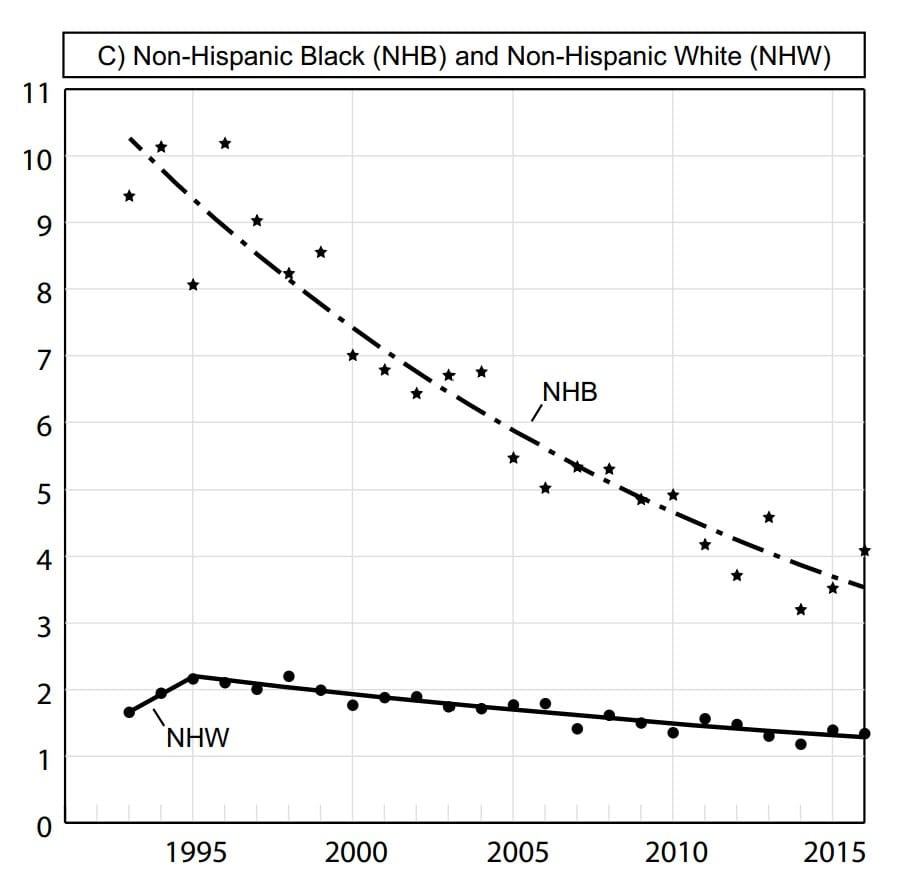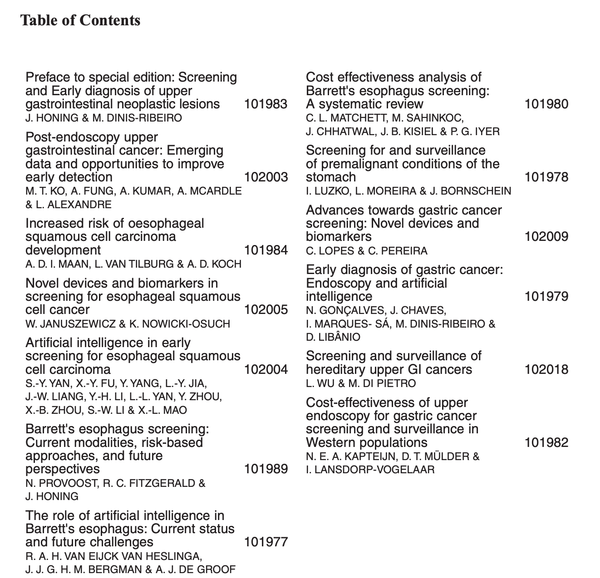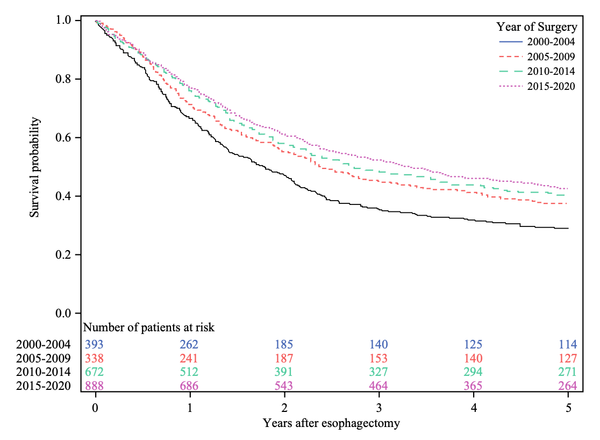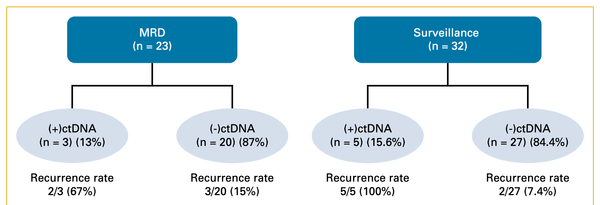Esophageal cancer mortality trends in US
This report focuses on esophageal cancer mortality trends in the US from 1992-2016. The dramatic decrease in ESCC among black males over the past several decades is highlighted. The recent leveling off of mortality for esophageal adenocarcinoma in white males was observed to continue.

Trends in Esophageal Cancer Mortality and Stage at Diagnosis by Race and Ethnicity in the United States.
Corona E, Yang L, Esrailian E, Ghassemi KA, Conklin JL, May FP.
Abstract
Introduction: Esophageal cancer (EC) is an aggressive malignancy with poor prognosis. Mortality and disease stage at diagnosis are important indicators of improvements in cancer prevention and control. We examined United States trends in esophageal adenocarcinoma (EAC) and esophageal squamous cell carcinoma (ESCC) mortality and stage at diagnosis by race and ethnicity.
Methods: We used Surveillance, Epidemiology, and End Results (SEER) data to identify individuals with histologically confirmed EAC and ESCC between 1 January 1992 and 31 December 2016. For both EAC and ESCC, we calculated age-adjusted mortality and the proportion presenting at each stage by race/ethnicity, sex, and year. We then calculated the annual percent change (APC) in each indicator by race/ethnicity and examined changes over time.
Results: The study included 19,257 EAC cases and 15,162 ESCC cases. EAC mortality increased significantly overall and in non-Hispanic Whites from 1993 to 2012 and from 1993 to 2010, respectively. EAC mortality continued to rise among non-Hispanic Blacks (NHB) (APC = 1.60, p = 0.01). NHB experienced the fastest decline in ESCC mortality (APC = - 4.53, p < 0.001) yet maintained the highest mortality at the end of the study period. Proportions of late stage disease increased overall by 18.5 and 24.5 percentage points for EAC and ESCC respectively; trends varied by race/ethnicity.
Conclusion: We found notable differences in trends in EAC and ESCC mortality and stage at diagnosis by race/ethnicity. Stage migration resulting from improvements in diagnosis and treatment may partially explain recent trends in disease stage at diagnosis. Future efforts should identify factors driving current esophageal cancer disparities.




